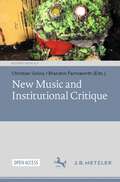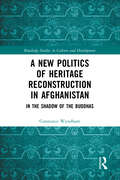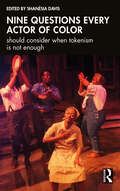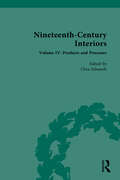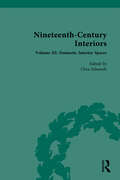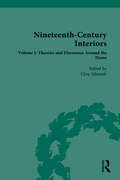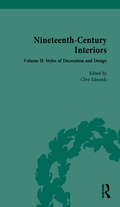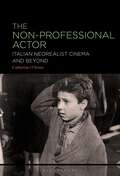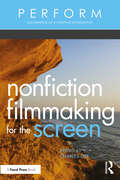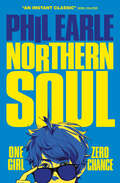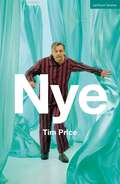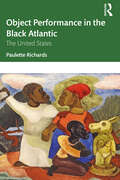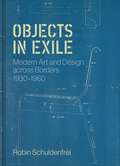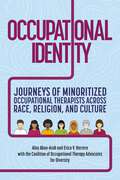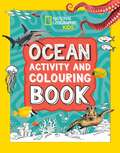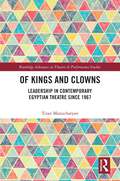- Table View
- List View
New Music and Institutional Critique (Ästhetiken X.0 – Zeitgenössische Konturen ästhetischen Denkens)
by Christian Grüny Brandon FarnsworthWhile institutional critique has long been an important part of artistic practice and theoretical debate in the visual arts, it has long escaped attention in the field of music. This open access volume assembles for the first time an array of theoretical approaches and practical examples dealing with New Music’s institutions, their critique, and their transformations. For scholars, leaders, and practitioners alike, it offers an important overview of current developments as well as theoretical reflections about New Music and its institutions today. In this way, it provides a major contribution to the debate about the present and future of contemporary music.
A New Politics of Heritage Reconstruction in Afghanistan: In the Shadow of the Buddhas (Routledge Studies in Culture and Development)
by Constance WyndhamA New Politics of Heritage Reconstruction in Afghanistan investigates the politics of cultural heritage preservation in Afghanistan between 2008 and 2015. Based on several periods of ethnographic fieldwork and the author’s direct employment on several internationally-sponsored heritage projects, this book studies the new and complex intersections between cultural heritage and politics in Afghanistan. Wyndham argues that a particular configuration of heritage and politics has emerged after the destruction of the Buddhas at Bamyan and demonstrates how the characteristics of this ‘post-Bamyan’ heritage paradigm are revealed through a number of case studies of internationally sponsored heritage work. These case studies reveal how politics and heritage are currently configured across a diverse range of governments, state and non-state actors, NGOs, individuals and forms of expertise—and why such intersections matter. The book responds to a call from across the discipline of Heritage Studies to look more closely at the relationships between heritage, power and politics. A New Politics of Heritage Reconstruction in Afghanistan provides a fascinating case study on the intersection of heritage and politics that will be of interest to students and scholars of heritage, as well as to professionals working on heritage preservation - both within and outside of government.
A New Politics of Heritage Reconstruction in Afghanistan: In the Shadow of the Buddhas (Routledge Studies in Culture and Development)
by Constance WyndhamA New Politics of Heritage Reconstruction in Afghanistan investigates the politics of cultural heritage preservation in Afghanistan between 2008 and 2015. Based on several periods of ethnographic fieldwork and the author’s direct employment on several internationally-sponsored heritage projects, this book studies the new and complex intersections between cultural heritage and politics in Afghanistan. Wyndham argues that a particular configuration of heritage and politics has emerged after the destruction of the Buddhas at Bamyan and demonstrates how the characteristics of this ‘post-Bamyan’ heritage paradigm are revealed through a number of case studies of internationally sponsored heritage work. These case studies reveal how politics and heritage are currently configured across a diverse range of governments, state and non-state actors, NGOs, individuals and forms of expertise—and why such intersections matter. The book responds to a call from across the discipline of Heritage Studies to look more closely at the relationships between heritage, power and politics. A New Politics of Heritage Reconstruction in Afghanistan provides a fascinating case study on the intersection of heritage and politics that will be of interest to students and scholars of heritage, as well as to professionals working on heritage preservation - both within and outside of government.
Nine questions every actor of color should consider when tokenism is not enough
by Shanésia DavisThis book confronts and analyzes the systemic racism that confronts actors of color in the USA through interviews with leading performers in the nation’s theatrical epicentre of Chicago.Each chapter deals with a different central question, from how these actors approach roles and the obstacles that they face, to the ways in which the industry can change to better enable actors of color. By bringing together these actors and sharing the ways in which they have functioned within the white theatre world, we can appreciate how theatre needs to embrace their identities so that all voices are heard, understood, and valued. The stories of these actors will reflect the systemic racism of the past and present with the hope of remaking the future.This is an important book for students, teachers, and professionals who engage in theatre work, helping them to understand the lived experiences of actors of color through those actors’ own words.
Nine questions every actor of color should consider when tokenism is not enough
This book confronts and analyzes the systemic racism that confronts actors of color in the USA through interviews with leading performers in the nation’s theatrical epicentre of Chicago.Each chapter deals with a different central question, from how these actors approach roles and the obstacles that they face, to the ways in which the industry can change to better enable actors of color. By bringing together these actors and sharing the ways in which they have functioned within the white theatre world, we can appreciate how theatre needs to embrace their identities so that all voices are heard, understood, and valued. The stories of these actors will reflect the systemic racism of the past and present with the hope of remaking the future.This is an important book for students, teachers, and professionals who engage in theatre work, helping them to understand the lived experiences of actors of color through those actors’ own words.
Nineteenth-Century Interiors: Volume IV: Products and Processes
by Clive EdwardsThis volume of primary source materials documents the essential practical aspects of making a home, decorating it and then furnishing it. The crucial constitutive parts that make up an interior from floor to ceiling are considered here in detail. The role of advice books and articles that attempted to direct homemakers in particular directions are examined, as are the more practical how-to publications that demonstrated the processes of interior decoration. Accompanied by extensive editorial commentary, this collection will be of great interest to students and scholars of art history.
Nineteenth-Century Interiors: Volume III: Domestic Interior Spaces
by Clive EdwardsThis volume of primary source materials documents the spatial layouts of the nineteenth century home as they often became more precisely planned with rooms for specific purposes being developed. The styles began to truly reflect the owner’s taste and position. The range is of course vast from single room dwellings to large-scale mansions and numerous variations in-between. Accompanied by extensive editorial commentary, this collection will be of great interest to students and scholars of art history.
Nineteenth-Century Interiors: Volume I: Theories and Discourses Around the Home
This volume of primary source materials documents the nature of the home and the theories and discussions around the concept. It examines the class divisions that become evident with the ostentatious lifestyles of political and society hostesses at the peak, whilst middle-class housing often in suburbia, seemed to have created a separation of home and work, arguably suggesting men and women lived in separate spheres. Working-class interiors, often seen the eyes of middle-class observers, were at the bottom of the hierarchy and often reflected concerns of social inequality and misery. The documents also address the process of purchasing and decorating a home, advice on decoration and home management, the nature of taste and comfort, and the symbolic roles of the home as an anchor in society. Accompanied by extensive editorial commentary, this collection will be of great interest to students and scholars of art history.
Nineteenth-Century Interiors: Volume II: Styles of Decoration and Design
This volume of primary source materials documents the nineteenth-century search for a representative style, and the alternating fashions for interiors that demonstrated the consumerism of the period. Although in some senses every interior is unique so that a style canon may seem to be meaningless, there have been important historical trends or styles that have influenced individual interiors, and these have formed the groundwork from which other styles and tastes have developed and changed. Accompanied by extensive editorial commentary, this collection will be of great interest to students and scholars of art history.
Nineteenth-Century Interiors: Volume III: Domestic Interior Spaces
This volume of primary source materials documents the spatial layouts of the nineteenth century home as they often became more precisely planned with rooms for specific purposes being developed. The styles began to truly reflect the owner’s taste and position. The range is of course vast from single room dwellings to large-scale mansions and numerous variations in-between. Accompanied by extensive editorial commentary, this collection will be of great interest to students and scholars of art history.
Nineteenth-Century Interiors: Volume II: Styles of Decoration and Design
by Clive EdwardsThis volume of primary source materials documents the nineteenth-century search for a representative style, and the alternating fashions for interiors that demonstrated the consumerism of the period. Although in some senses every interior is unique so that a style canon may seem to be meaningless, there have been important historical trends or styles that have influenced individual interiors, and these have formed the groundwork from which other styles and tastes have developed and changed. Accompanied by extensive editorial commentary, this collection will be of great interest to students and scholars of art history.
Nineteenth-Century Interiors: Volume I: Theories and Discourses Around the Home
by Clive EdwardsThis volume of primary source materials documents the nature of the home and the theories and discussions around the concept. It examines the class divisions that become evident with the ostentatious lifestyles of political and society hostesses at the peak, whilst middle-class housing often in suburbia, seemed to have created a separation of home and work, arguably suggesting men and women lived in separate spheres. Working-class interiors, often seen the eyes of middle-class observers, were at the bottom of the hierarchy and often reflected concerns of social inequality and misery. The documents also address the process of purchasing and decorating a home, advice on decoration and home management, the nature of taste and comfort, and the symbolic roles of the home as an anchor in society. Accompanied by extensive editorial commentary, this collection will be of great interest to students and scholars of art history.
Nineteenth-Century Interiors: Volume IV: Products and Processes
This volume of primary source materials documents the essential practical aspects of making a home, decorating it and then furnishing it. The crucial constitutive parts that make up an interior from floor to ceiling are considered here in detail. The role of advice books and articles that attempted to direct homemakers in particular directions are examined, as are the more practical how-to publications that demonstrated the processes of interior decoration. Accompanied by extensive editorial commentary, this collection will be of great interest to students and scholars of art history.
The Non-Professional Actor: Italian Neorealist Cinema and Beyond
by Dr. Catherine O'RaweProvides the first critical overview of acting, stardom, and performance in post-war Italian film (1945-54), with special attention to the figure of the non-professional actor, who looms large in neorealist filmmaking. Italian post-war cinema has been widely celebrated by critics and scholars: films such as Bicycle Thieves (De Sica, 1948) and Paisan (Rossellini, 1946) remain globally influential, particularly for their use of non-professional actors. This period of regeneration of Italian cinema initiated the boom in cinemagoing that made cinema an important vector of national and gender identity for audiences.The book addresses the casting, performance, and labour of non-professional actors, particularly children, their cultural and economic value to cinema, and how their use brought ideas of the ordinary into the discourse of stars as extraordinary. Relatedly, O'Rawe discusses critical and press discourses around acting, performance, and stardom, often focused on the 'crisis' of acting connected to the rise of non-professionals and the girls (like Sophia Loren) who found sudden cinematic fame via beauty contests.
Nonfiction Filmmaking for the Screen (PERFORM)
by Charles DyeCombining essays and interviews with nonfiction filmmakers, this collection explores the business side of nonfiction media creation for film and television. Over 30 industry professionals dispel myths about the industry and provide practical advice on topics such as how to break into the field; how to develop, nurture, and navigate business relationships; and how to do creative work under pressure. Readers will also learn about the entrepreneurial expectations in relation to marketing, strategies for contending with the emotional highs and lows of creating nonfiction media, and money management whilst pursuing a career in creating nonfiction media. Written for undergraduates and graduates studying filmmaking, media production, and documentary filmmaking, as well as aspiring nonfiction media creators and documentary filmmakers, this book provides readers with a wealth of first-hand information that will help them create their own opportunities and pursue a career in nonfiction film and television.
Nonfiction Filmmaking for the Screen (PERFORM)
Combining essays and interviews with nonfiction filmmakers, this collection explores the business side of nonfiction media creation for film and television. Over 30 industry professionals dispel myths about the industry and provide practical advice on topics such as how to break into the field; how to develop, nurture, and navigate business relationships; and how to do creative work under pressure. Readers will also learn about the entrepreneurial expectations in relation to marketing, strategies for contending with the emotional highs and lows of creating nonfiction media, and money management whilst pursuing a career in creating nonfiction media. Written for undergraduates and graduates studying filmmaking, media production, and documentary filmmaking, as well as aspiring nonfiction media creators and documentary filmmakers, this book provides readers with a wealth of first-hand information that will help them create their own opportunities and pursue a career in nonfiction film and television.
Northern Soul
by Phil EarleFrom award-winning author Phil Earle comes the hilariously agonising account of one teenage boy’s disastrous attempts to win the heart of the cool new girl at school.
Nye (Modern Plays)
by Tim PriceOne man's dream of the NHSFrom campaigning at the coalfield to leading the battle to create the NHS, Aneurin 'Nye' Bevan is often referred to as the politician with greatest influence on our country without ever being Prime Minister.Confronted with death, Nye's deepest memories lead him on a mind-bending journey back through his life; from childhood to mining underground, Parliament and fights with Churchill in an epic Welsh fantasia.Tim Price's surreal and spectacular journey through the life and legacy of the man who transformed Britain's welfare state premiered at the National Theatre starring Michael Sheen as Nye Bevan. This edition was published to coincide with the original production in February 2023.
Object Performance in the Black Atlantic: The United States
by Paulette RichardsGiven that slaveholders prohibited the creation of African-style performing objects, is there a traceable connection between traditional African puppets, masks, and performing objects and contemporary African American puppetry? This study approaches the question by looking at the whole performance complex surrounding African performing objects and examines the material culture of object performance. Object Performance in the Black Atlantic argues that since human beings can attribute private, personal meanings to objects obtained for personal use such as dolls, vessels, and quilts, the lines of material culture continuity between African and African American object performance run through objects that performed in ritual rather than theatrical capacity. Split into three parts, this book starts by outlining the spaces where the African American object performance complex persisted through the period of slavery. Part Two traces how African Americans began to reclaim object performance in the era of Jim Crow segregation and Part Three details how increased educational and economic opportunities along with new media technologies enabled African Americans to use performing objects as a powerful mode of resistance to the objectification of Black bodies. This is an essential study for any students of puppetry and material performance, and particularly those concerned with African American performance and performance in North America more broadly.
Object Performance in the Black Atlantic: The United States
by Paulette RichardsGiven that slaveholders prohibited the creation of African-style performing objects, is there a traceable connection between traditional African puppets, masks, and performing objects and contemporary African American puppetry? This study approaches the question by looking at the whole performance complex surrounding African performing objects and examines the material culture of object performance. Object Performance in the Black Atlantic argues that since human beings can attribute private, personal meanings to objects obtained for personal use such as dolls, vessels, and quilts, the lines of material culture continuity between African and African American object performance run through objects that performed in ritual rather than theatrical capacity. Split into three parts, this book starts by outlining the spaces where the African American object performance complex persisted through the period of slavery. Part Two traces how African Americans began to reclaim object performance in the era of Jim Crow segregation and Part Three details how increased educational and economic opportunities along with new media technologies enabled African Americans to use performing objects as a powerful mode of resistance to the objectification of Black bodies. This is an essential study for any students of puppetry and material performance, and particularly those concerned with African American performance and performance in North America more broadly.
Objects in Exile: Modern Art and Design across Borders, 1930–1960
by Robin SchuldenfreiAn essential examination of how emigration and resettlement defined modernismIn the fraught years leading up to World War II, many modern artists and architects emigrated from continental Europe to the United States and Britain. The experience of exile infused their modernist ideas with new urgency and forced them to use certain materials in place of others, modify existing works, and reconsider their approach to design itself. In Objects in Exile, Robin Schuldenfrei reveals how the process of migration was crucial to the development of modernism, charting how modern art and architecture was shaped by the need to constantly face—and transcend—the materiality of things.Taking readers from the prewar era to the 1960s, Schuldenfrei explores the objects these émigrés brought with them, what they left behind, and the new works they completed in exile. She argues that modernism could only coalesce with the abandonment of national borders in a process of emigration and resettlement, and brings to life the vibrant postwar period when avant-garde ideas came together and emerged as mainstream modernism. Examining works by Walter Gropius, László Moholy-Nagy, Lucia Moholy, Herbert Bayer, Anni and Josef Albers, and others, Schuldenfrei demonstrates the social impact of art objects produced in exile.Shedding critical light on how the pressures of dislocation irrevocably altered the course of modernism, Objects in Exile shows how artists and designers, forced into exile by circumstances beyond their control, changed in unexpected ways to meet the needs and contexts of an uncertain world.
Objects in Exile: Modern Art and Design across Borders, 1930–1960
by Robin SchuldenfreiAn essential examination of how emigration and resettlement defined modernismIn the fraught years leading up to World War II, many modern artists and architects emigrated from continental Europe to the United States and Britain. The experience of exile infused their modernist ideas with new urgency and forced them to use certain materials in place of others, modify existing works, and reconsider their approach to design itself. In Objects in Exile, Robin Schuldenfrei reveals how the process of migration was crucial to the development of modernism, charting how modern art and architecture was shaped by the need to constantly face—and transcend—the materiality of things.Taking readers from the prewar era to the 1960s, Schuldenfrei explores the objects these émigrés brought with them, what they left behind, and the new works they completed in exile. She argues that modernism could only coalesce with the abandonment of national borders in a process of emigration and resettlement, and brings to life the vibrant postwar period when avant-garde ideas came together and emerged as mainstream modernism. Examining works by Walter Gropius, László Moholy-Nagy, Lucia Moholy, Herbert Bayer, Anni and Josef Albers, and others, Schuldenfrei demonstrates the social impact of art objects produced in exile.Shedding critical light on how the pressures of dislocation irrevocably altered the course of modernism, Objects in Exile shows how artists and designers, forced into exile by circumstances beyond their control, changed in unexpected ways to meet the needs and contexts of an uncertain world.
Occupational Identity: Journeys of Minoritized Occupational Therapists Across Race, Religion, and Culture
by Coalition of Occupational Therapy Advocates for Diversity Alaa Abou-Arab Erica V. HerreraDelving into the diverse experiences of minoritised occupational therapists, this book contributes to the increasingly critical need for cultural humility in healthcare and discusses difficult topics surrounding culture, race, and religion with clarity and humanity.Using a wealth of research and knowledge on different cultures and communities this illuminating book focusses on a person-centred approach and encourages meaningful dialogue and self-reflection. Co-authored by the Coalition of Occupational Therapy Advocates for Diversity, this invaluable resource will allow you to journey through real-world experiences and cultural contexts through in-depth case studies and interviews from OTs at varying stages of their career.Occupational Identity will equip you with rich insights and actionable guidance in order to promote a better understanding of race, religion, and culture. Whether you're a seasoned OT, student, educator, or healthcare worker, this book will help you embrace diversity, establish better trust and communication, and deliver compassionate and culturally nuanced care that promotes better health outcomes for all.
Of Kings and Clowns: Leadership in Contemporary Egyptian Theatre Since 1967 (Routledge Advances in Theatre & Performance Studies)
by Tiran ManucharyanThis book examines the transformations Egyptian theatre has undergone since 1967. Through detailed analyses of the plays, the book investigates the ways Egyptian theatre represents, formulates, and imagines political and cultural leadership and, by implication, enacts its own leadership. Alongside the work of established playwrights, such as Yusuf Idris, Abul-ʿEla El-Salamouny, Fathia El-ʿAssal and Lenin El-Ramly, it also discusses the input in theatre of a younger generation, reflecting the new transformations in Egyptian theatre following the 2011 revolution. Relating the theoretical underpinnings of its analyses to theoretical discussions by Egyptian playwrights, the book contributes to current English-language scholarship in theatre studies, by providing a discourse largely absent from it. Considering the growing sense in English-language academia on the need for research and education beyond the Western canon this book offers an important addition to the study resources. This book will interest both scholars and students who study the Arab world, and researchers and students with an interest in cultural studies, more specifically twentieth- and twenty-first-century theatre, and literature studies. The book’s specific focus on political theatre and its gender perspective make it also of interest to the fields of political and gender studies.
